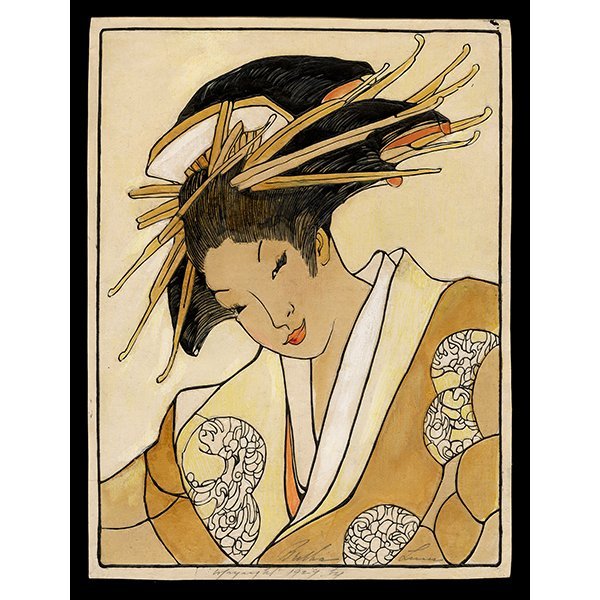Details
In the tradition of the great Ukiyo-e print master Utamaro, Bertha Lum has created a striking 20th-century design capturing the allure and mystery of the Japanese Geisha from a time gone by. Presented in a three-quarter length portrait much in the style of Utamaro’s “big head” designs, Lum showcases a Geisha in her finest.
Her well-coiffed hair is adorned with large bamboo pins (a sign of high rank within her profession), while she wears a stunning four-layer kimono ensemble embellished with elaborate circular patterns, most likely the traditional crest of her particular tea-house. Lum created this design as a raised line print—a printing technique where the artist molded wet paper over a carved wooden block. After the paper dried, Lum hand-painted the embossed paper using the raised lines to delineate the areas of colors. The effect gives the print a rich sense of texture and a strong painterly effect.
Connoisseur's Note
Geisha is among Lum’s most sought after portraits and one of her most successful raised line prints. The texture achieved by the raised line printing process gives the work an exciting surface and provides a visually striking sense of depth that sets this small body of work apart from her regular prints and the work of her contemporaries. Lum initiated the production of her raised line prints in 1922 while living in Peking. These prints were a small minority of Lum’s total output, and because the printing technique required hand-applied pigment and embellishments, the editions of these prints were relatively small.
More prints by Bertha Lum:



